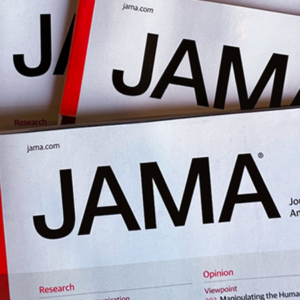פוסט זה זמין גם ב:
עברית
 A Prespecified Analysis of the SELECT2 Trial
A Prespecified Analysis of the SELECT2 Trial
Findings In this prespecified analysis of the SELECT2 trial including 352 patients, both directly presenting and transferred patients had better clinical outcomes with EVT compared with medical management, without a significant effect modification. Treatment effect estimates favored thrombectomy in patients with a low Alberta Stroke Program Early CT Score (ASPECTS) at referring hospitals and in those who demonstrated a loss of 2 or more points in ASPECTS during transfer.
Meaning Thrombectomy was beneficial in transferred patients with large ischemic core stroke without heterogeneity in treatment effect vs those who presented directly and appeared to confer better outcomes even in those with low ASPECTS at outside hospitals or worsening ASPECTS during interfacility transfer.
Importance Patients with large ischemic core stroke have poor clinical outcomes and are frequently not considered for interfacility transfer for endovascular thrombectomy (EVT).
Objective To assess EVT treatment effects in transferred vs directly presenting patients and to evaluate the association between transfer times and neuroimaging changes with EVT clinical outcomes.
Design, Setting, and Participants This prespecified secondary analysis of the SELECT2 trial, which evaluated EVT vs medical management (MM) in patients with large ischemic stroke, evaluated adults aged 18 to 85 years with acute ischemic stroke due to occlusion of the internal carotid or middle cerebral artery (M1 segment) as well as an Alberta Stroke Program Early CT Score (ASPECTS) of 3 to 5, core of 50 mL or greater on imaging, or both. Patients were enrolled between October 2019 and September 2022 from 31 EVT-capable centers in the US, Canada, Europe, Australia, and New Zealand. Data were analyzed from August 2023 to January 2024.
Interventions EVT vs MM.
Main Outcomes and Measures Functional outcome, defined as modified Rankin Scale (mRS) score at 90 days with blinded adjudication.
Results A total of 958 patients were screened and 606 patients were excluded. Of 352 enrolled patients, 145 (41.2%) were female, and the median (IQR) age was 66.5 (58-75) years. A total of 211 patients (59.9%) were transfers, while 141 (40.1%) presented directly. The median (IQR) transfer time was 178 (136-230) minutes. The median (IQR) ASPECTS decreased from the referring hospital (5 [4-7]) to an EVT-capable center (4 [3-5]). Thrombectomy treatment effect was observed in both directly presenting patients (adjusted generalized odds ratio [OR], 2.01; 95% CI, 1.42-2.86) and transferred patients (adjusted generalized OR, 1.50; 95% CI, 1.11-2.03) without heterogeneity (P for interaction = .14). Treatment effect point estimates favored EVT among 82 transferred patients with a referral hospital ASPECTS of 5 or less (44 received EVT; adjusted generalized OR, 1.52; 95% CI, 0.89-2.58). ASPECTS loss was associated with numerically worse EVT outcomes (adjusted generalized OR per 1-ASPECTS point loss, 0.89; 95% CI, 0.77-1.02). EVT treatment effect estimates were lower in patients with transfer times of 3 hours or more (adjusted generalized OR, 1.15; 95% CI, 0.73-1.80).
Conclusions and Relevance Both directly presenting and transferred patients with large ischemic stroke in the SELECT2 trial benefited from EVT, including those with low ASPECTS at referring hospitals. However, the association of EVT with better functional outcomes was numerically better in patients presenting directly to EVT-capable centers. Prolonged transfer times and evolution of ischemic change were associated with worse EVT outcomes. These findings emphasize the need for rapid identification of patients suitable for transfer and expedited transport.
Trial Registration ClinicalTrials.gov Identifier: NCT03876457




 A Prespecified Analysis of the SELECT2 Trial
A Prespecified Analysis of the SELECT2 Trial

